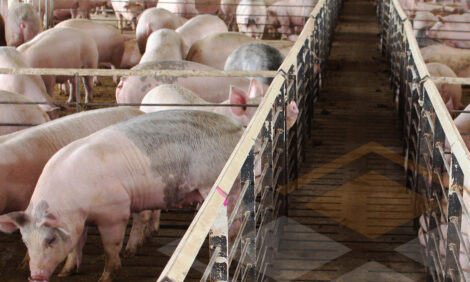



Study of Pig Tracheal Epithelial Cells Infected with Swine Influenza Virus and/or Streptococcus suis
This Canadian study reveals that how a co-infection with the H1N1 flu virus can exacerbate respiratory disease caused by Strep suis.Swine influenza is a highly contagious viral infection in pigs affecting the respiratory tract that can have significant economic impacts. Streptococcus suis serotype 2 is one of the most important post-weaning bacterial pathogens in swine causing different infections, including pneumonia.
In a paper in BMC Veterinary Research, first-named author, Yuan Dang of the University of Montreal and co-authors there and at Laval University explain that both pathogens are important contributors to the porcine respiratory disease complex.
Outbreaks of swine influenza virus with a significant level of co-infections due to S. suis have lately been reported. In order to analyse, for the first time, the transcriptional host response of swine tracheal epithelial (NPTr) cells to H1N1 swine influenza virus (swH1N1) infection, S. suis serotype 2 infection and a dual infection, the Canada-based scientists carried out a comprehensive gene expression profiling using a microarray approach.
Gene clustering showed that the swH1N1 and swH1N1/S. suis infections modified the expression of genes in a similar manner. Additionally, infection of NPTr cells by S. suis alone resulted in fewer differentially expressed genes compared to mock-infected cells.
However, some important genes coding for inflammatory mediators such as chemokines, interleukins, cell adhesion molecules and eicosanoids were significantly upregulated in the presence of both pathogens compared to infection with each pathogen individually. This synergy may be the consequence, at least in part, of an increased bacterial adhesion/invasion of epithelial cells previously infected by swH1N1, as recently reported.
Influenza virus would replicate in the respiratory epithelium and induce an inflammatory infiltrate comprised of mononuclear cells and neutrophils, ocncluded Dang and co-authors. In a co-infection situation, although these cells would be unable to phagocyte and kill S. suis, they are highly activated by this pathogen.
S. suis is not considered a primary pulmonary pathogen but an exacerbated production of pro-inflammatory mediators during a co-infection with influenza virus may be important in the pathogenesis and clinical outcome of S. suis-induced respiratory diseases.
Reference
Dang Y., C. Lachance, Y. Wang, C.A. Gagnon, C. Savard, M. Segura, D. Grenier and M. Gottschalk. 2014. Transcriptional approach to study porcine tracheal epithelial cells individually or dually infected with swine influenza virus and Streptococcus suis. BMC Veterinary Research. 10:86. doi:10.1186/1746-6148-10-86
Further Reading
You can view the full report by clicking here.
To find out more about the diseases mentioned, click here.
June 2014






